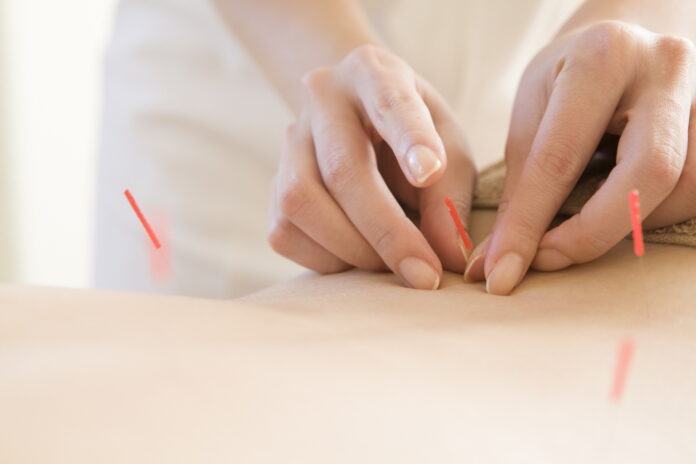A Guideline for Treating Failed Back Surgery Syndrome
By Namwook Cho L.Ac.
Where do you find solutions if you have trouble treating certain symptoms? Or, If you are unsure which herbal formula to use to help your patient, what do you usually do to find an answer?
In South Korea, the government led the project to set standard protocols with major Korean medicine societies, and Korean medicine schools have developed standardized Eastern medicine protocols for each symptom seen in an Acupuncture clinic.
National Institute for Korean Medicine Development website(nikom.or.kr/engnckm/index.do) shows protocols ready to be spread to interested people. The protocols are written in Korean, but summarized information regarding the recommended Eastern Medicinal treatment methods is explained in English.
From August, Acupuncture Times will introduce each protocol monthly. The first of the series is for Osteoarthritis (OA).
Postoperative lumbar spine syndrome includes all patients undergoing lumbar disc herniation and lumbar spinal stenosis surgery. More generally, it applies to all patients needing recovery after lumbar spine surgery, which encompasses patients with disease groups ranging from postoperative pain syndrome in which pain recurs or persists after surgery to failed back surgery syndrome (FBSS). Failed back surgery syndrome, FBSS is defined by the International Association for the Study of Pain as “lumbar spinal pain of unknown origin either persisting despite the surgical intervention or appearing after surgical intervention for spinal pain originally in the same topographical location.” And persistent postoperative pain has been defined by the International Association for the Study of Pain as a clinical discomfort that lasts more than two months post-surgery without other causes of pain such as chronic infection or pain from a chronic condition preceding the surgery.
The guideline for the symptoms aims to develop clinical practice guidelines for treating patients with the postoperative lumbar syndrome with traditional Korean medicine.
The guideline deals with the postoperative symptoms of lumbar spine surgery that follow its major contributing diseases such as disc herniation and spinal stenosis. And the post lumbar spine surgery syndrome encompasses all patients, including patients with initial postoperative pain, patients in the postoperative recovery phase, patients with chronic pain, patients with Failed back surgery syndrome, and patients with recurrent back pain.
|
Treatment |
|
|
Acupuncture and electro-acupuncture |
|
|
Performing acupuncture or electro-acupuncture treatment reduces pain in post-lumbar spine surgery patient |
B/Moderate |
|
Acupuncture treatment helps collect blood following the diagnosis of a Korean medicine doctor and depending on the postoperative period. Caution must be taken to avoid infection if treatment is performed during the initial postoperative period on acupoints adjacent to the surgical site, and if an evaluation is needed concerning persistent or recurrent pain after surgery, collaboration with Western medicine may be necessary. |
|
|
Early Postoperative Stage |
|
|
Alone treatment |
|
|
In the early stage of post-lumbar spine surgery, the group that underwent acupuncture treatment immediately after surgery showed less pain than the the group that received shame acupuncture treatment. |
B/Moderate
|
|
During the acupuncture treatment for patients who just underwent lumbar spine surgery, acupoints such as Sinsu (BL23), Daejangsu (BL25), Gwanwonsu (BL26), Seungbu (BL36), Wijung (BL40), and Sinmaek (BL62) of the bladder meridian and Pungsi (GB31), Yangneungcheon (GB34), and Hwando (GB30) of the gallbladder meridian may be selected based on the diagnosis of a Korean traditional medicine doctor. Acupoints adjacent to the surgical site in the early postoperative stage should be cautiously treated to prevent infection. |
|
|
In the early postoperative stage, the patient group that received acupuncture treatment immediately after surgery showed less pain and improved function compared to the active control group (on pain medication). |
B/Low |
|
During the acupuncture treatment immediately after lumbar spine surgery, acupoints on the bladder, gallbladder, and conception vessel meridians may be selected based on the diagnosis of Korean traditional medicine. Acupoints adjacent to the surgical site in the early postoperative stage should be cautiously treated to prevent infection. |
|
|
Postoperative Rehabilitation Stage |
|
|
Add-on Treatment (with conventional rehabilitation) |
|
|
In the postoperative rehabilitation stage, the patient group that received conventional rehabilitation and acupuncture or electro-acupuncture treatment reported reduced pain and improved function compared to the group that received conventional rehabilitation treatment only. Therefore, concurrent treatment of acupuncture or electro-acupuncture and conventional rehabilitation treatment should be considered for patients in the postoperative rehabilitation. |
B/Low |
|
For patients in the postoperative rehabilitation stage who receive the concurrent treatment of acupuncture or electro-acupuncture and conventional rehabilitation, a traditional Korean medical doctor may select acupoints on bladder and gallbladder meridians or cervical hyeocheok (EX-B2). Acupoints adjacent to the surgical site should be cautiously treated to prevent infection. Also, the patient’ s condition and the current postoperative stage must be considered for a comprehensive Korean medicine treatment. If necessary, a collaboration with Western medicine may be requested. |
|
|
Korean Herbal Medicine |
|
|
Patients in the postoperative rehabilitation stage or with persistent or recurrent pain |
|
|
Add-on treatment (with conventional rehabilitation |
|
|
For patients who are in the postoperative rehabilitation stage or suffer from persistent and recurrent pain, concurrent treatment of Korean herbal medicine and conventional rehabilitation or an integrative traditional Korean medicine treatment may be considered. |
C/Very Low |
|
To promote rapid recovery of patients who are in the rehabilitation stage or suffer from persistent or recurrent pain after lumbar spine surgery, Whuallack-tang, and Boyanghwano-tang, promote blood circulation and eliminate blood stasis (活血化瘀), relax muscles, and activate meridians (舒筋活絡), and relieve pain (鎭痛) can be prescribed. A Korean medicine doctor may prescribe Dokhwalgisaeng-tang, Ojeoksan, Boikyangwi-tang, Sipjeondaebo-tang, and Yukmijihwang-tang for symptoms that appear after the postoperative intermediate or rehabilitation stage, such as pain and/or numbness in the lower extremity. |
|






































